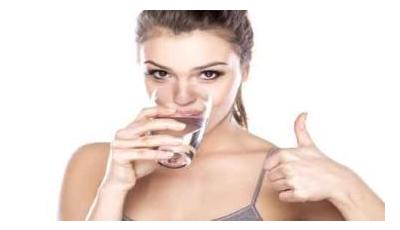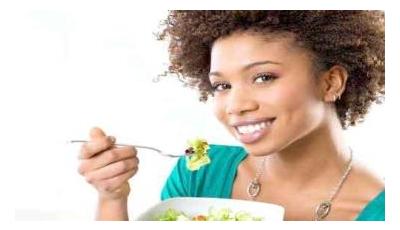The ketogenic diet has historically been used to manage certain specific medical conditions, such as childhood epilepsy. However, the keto diet has become popular in the mainstream recently as a method for losing weight. After about 48 hours on this high-fat, moderate-protein, and low-carb diet, your body will enter a state of ketosis and begin burning your fat reserves for energy.
”A period of low carbohydrate ketogenic diet may help to control hunger and may improve fat oxidative metabolism and therefore reduce body weight.;(NIH.gov)
”A period of low carbohydrate ketogenic diet may help to control hunger and may improve fat oxidative metabolism and therefore reduce body weight.;(NIH.gov)

Understanding ketosis takes a bit of knowledge of energy metabolism and the biochemistry of your cells. In a normal diet, much of your calories come in the form of carbohydrates. Once in your body, these carbs are broken down into glucose, a simple sugar molecule. Glucose is eventually used to produce a molecule called acetyl-coenzyme A (acetyl CoA). Acetyl CoA enters the mitochondria in your cells and is used to produce ATP (adenosine triphosphate), a high-energy molecule that your cells use to fuel all of your body’s activities.1
If you stop consuming carbs, your cells no longer have glucose as a source of energy. The metabolic pathways in your cells have to switch and start using a different calorie source. In this case, your body starts breaking down lipids from your fat reserves into fatty acids and ketone bodies, which circulate in your bloodstream and are taken up by cells throughout your body. There, these ketone bodies are processed into acetyl CoA, enabling your mitochondria to keep making ATP. This state, in which your metabolism uses fats instead of sugars for energy production, is called ketosis.1

Ketogenic Diet vs. Low-Carb Diets
You may be wondering how exactly the ketogenic diet is different from other low-carbohydrate diets, such as the Atkin’s Diet, the South Beach Diet, or the Zone Diet.2,3 Essentially, these other, more traditional low-carb diets do not induce a state of ketosis. Although you may be counting carbs in these diets and limiting your total carbohydrate intake to a low amount, you are still consuming enough calories from carbs to keep glucose as your cells’ primary source of energy. For a true ketogenic diet, you would only eat 20-50 grams of carbs per day.4
You may be wondering how exactly the ketogenic diet is different from other low-carbohydrate diets, such as the Atkin’s Diet, the South Beach Diet, or the Zone Diet.2,3 Essentially, these other, more traditional low-carb diets do not induce a state of ketosis. Although you may be counting carbs in these diets and limiting your total carbohydrate intake to a low amount, you are still consuming enough calories from carbs to keep glucose as your cells’ primary source of energy. For a true ketogenic diet, you would only eat 20-50 grams of carbs per day.4

How Long Before You Enter a State of Ketosis?
On a normal diet, you can enter a temporary state of ketosis during strenuous exercise. When you perform intense aerobic exercise, your muscles need extra energy to keep moving. Your short-term supply of glucose runs out quickly, and your blood sugar and insulin levels drop. When this happens, your body starts breaking down glycogen to produce more glucose and breaks down fat to produce ketone bodies. You resume normal energy production with glucose once you stop exercising.5
Ketosis through your diet takes longer. When simply fasting, you can enter a state of ketosis in 12 to 14 hours, faster if you are exercising.5 While on a low-carb diet, ketosis normally takes 2-3 days or even as long as a week, depending on your carbohydrate intake.6 Essentially, the lower your carb intake and the more you exercise, the faster you will enter ketosis.

How to Tell if You are in Ketosis
Without testing, there are a few physiological signs that you are in a state of ketosis. At first, you may experience some of the symptoms of “keto flu,” such as digestive changes, fatigue, headaches, irritability, or muscle cramps, as your body adjusts to using ketones instead of glucose for fuel. Another tell-tale sign is a characteristic bad smell in your breath, due to extra acetone released by your cells.6
The best way to know if you are in ketosis is through a diagnostic test. Ketosis is defined as a blood concentration of ketone bodies of 0.5-3.0 mm/L. Lower than this range means you need to cut your carb intake more to achieve true ketosis. If you have a ketone concentration higher than 3.0 mm/L, however, you should see your doctor. Blood tests are the most accurate means of measuring your blood ketone level, which can be done using a finger prick and a home test kit. For a cheaper and less invasive test, you can use specialized strips to check the level of ketones in your urine for a fairly good idea.
Without testing, there are a few physiological signs that you are in a state of ketosis. At first, you may experience some of the symptoms of “keto flu,” such as digestive changes, fatigue, headaches, irritability, or muscle cramps, as your body adjusts to using ketones instead of glucose for fuel. Another tell-tale sign is a characteristic bad smell in your breath, due to extra acetone released by your cells.6
The best way to know if you are in ketosis is through a diagnostic test. Ketosis is defined as a blood concentration of ketone bodies of 0.5-3.0 mm/L. Lower than this range means you need to cut your carb intake more to achieve true ketosis. If you have a ketone concentration higher than 3.0 mm/L, however, you should see your doctor. Blood tests are the most accurate means of measuring your blood ketone level, which can be done using a finger prick and a home test kit. For a cheaper and less invasive test, you can use specialized strips to check the level of ketones in your urine for a fairly good idea.
[1] Gano LB, Patel M, Rho JM. 2014. “Ketogenic diets, mitochondria, and neurological diseases.” J Lipid Res. Nov; 55(11):2211-2228. https://www.ncbi.nlm.nih.gov/pubmed/24847102
[2] Atkins. “How Does a Low Carb Diet Work?” https://www.atkins.com/how-it-works
[3] Mayo Clinic Staff. “South Beach Diet.” https://www.mayoclinic.org/healthy-lifestyle/weight-loss/in-depth/south-beach-diet/art-20048491
[4] Brouns F. 2018. “Overweight and diabetes prevention: is a low-carbohydrate-high-fat diet recommendable?” Eur J Nutr. Jun; 57(4):1301-1312. https://www.ncbi.nlm.nih.gov/pubmed/29541907
[5] Cahill GF Jr, Aoki TT, Ruderman NB. 1973. “Ketosis.” Trans Am Clin Climatol Assoc. 84:184-202. https://www.ncbi.nlm.nih.gov/pubmed/4199621
[6] Mawer R. August 2, 2018. “10 Signs and Symptoms That You’re in Ketosis.” HealthLine.https://www.healthline.com/nutrition/10-signs-and-symptoms-of-ketosis#section1
-
Keto Electrolytes
By Dr. KarenDecember 20, 2021 -
Supplements for Ketogenic Diet
By Dr. KarenAugust 14, 2022 -
How to Know if You are in Ketosis
By Dr. AnnaDecember 20, 2021 -
Keto Diet for Beginners
By Dr. AnnaAugust 14, 2022 -
Keto Diet Food List
By Dr. AnnaAugust 14, 2022 -
Vegetarian Keto
By Dr. KarenAugust 14, 2022


Search the blog
Article Categories
- All Articles (95)
- Rating Charts (1)
- Beauty & Skincare (17)
- FAQ (0)
- Hair Care (9)
- Health & Wellness (12)
- Anti-Aging (4)
- Kid's Health (0)
- Makeup (2)
- Men's Health (2)
- Oral Care (3)
- Sunscreen (7)
- Skin Tools & Treatments (10)
- Supplements (26)
- Videos (0)




















